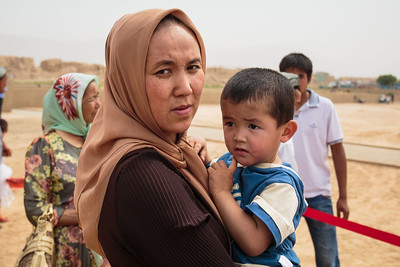This week, China made a groundbreaking announcement that married couples would now be permitted to have up to three children, reversing the previous two-child policy that has been implemented since 2016. The policy shift was brought on by two major observations: (1) late 2020 census data exhibits a major decline in birth rates, lower than ever seen since the 1960s; and (2) China’s population skews heavily towards the middle-aged and elderly rather than young adults and adolescents, a.k.a the future of the nation.
But while the Chinese government sees plenty reason to loosen the cap on how many children married couples can have, there appears to be a general unwillingness among the Chinese population to have three children. Multiple experts have raised their perspective that “if relaxing the birth policy was effective, the current two-child policy should have proven to be effective too.” But that is certainly not the case. Many have found that the costs of living and the pressure of employment are major deterrents to having more children, or even having any children at all; some have expressed that they would rather put all their resources into raising one child to the best of their ability than to split their resources among two or three children. Some have noted that, as seen in most developed nations in the world, women are more often choosing to pursue higher education and careers, and forgo marrying and starting a family; and when they do, they take on more responsibility for raising their kids than their husbands.
To be fair, it does seem inconsequential to permit married couples to have three children when as recently as 2020 – when couples were allowed to have up to two children – the average fertility rate in China was still just 1.3 children per woman. And even though the government has reassured that the policy change will be accompanied by “supportive measures” such as reduced educational costs, housing assistance, and tax support, many still remain reluctant to raise more children. In fact, Xinhua News Agency’s Weibo account recently released a poll asking respondents if they were excited for the three-child-policy and planned on having a third child; 93.5% stated that they “would never think of it”, whereas only 6.5% said they were “ready and very eager to do so”, “it’s on my agenda”, or that they’re “hesitating and there’s lot to consider”. There have, however, been a few notable cases in which couples were thrilled by the new policy; one Beijing-based human resources specialist, Su Meizhen, explained she is ecstatic to be pregnant with her third child.
What hasn’t been discussed among the news of the new policy change, however, is the reality for Uyghur citizens in the eastern region of Xinjiang, more colloquially referred to as East Turkistan. There, Uyghur and other Turkic Muslim minorities face quite the opposite reality; whereas throughout the mainland, Han Chinese couples are permitted and even encouraged to have up to three children, in East Turkistan, Uyghurs are facing a draconian curtailment of their reproductive freedom. In June 2020, expert Adrian Zenz released his groundbreaking report, Sterilizations, IUDs, and Mandatory Birth Control: The CCP’s Campaign to Suppress Uyghur Birthrates in Xinjiang, it which he discusses the exponential decrease of the natural population growth rate in the region and the plethora of actions taken by the Chinese authorities to prevent the births of Uyghur children.
More specifically, Zenz observed that the Chinese government had set the goal that by 2019, upwards of 80% of women of child-bearing age in the minority prefectures (including Xinjiang/East Turkistan) would be fitted with IUDs – either voluntarily or involuntarily – following by monthly pregnancy tests and examinations to ensure the effectiveness of the IUDs. Despite the former two-child policy which was in place from 2016 up until this week, at least half of all Uyghur women with only one child were fitted with IUDs. Should a woman want to have her IUD removed in order to have more children, they must receive government approval and a surgery to do so; those that sought out unauthorized surgeries to remove the implants would be punished with imprisonment and/or steep fines.
Other than forced implantation of IUDs, many Uyghur women have reported being sterilized against their will, though this is a less common practice. In 2018, a Uyghur former detainee by the name of Tursunay Ziyawudun revealed that during her internment, she was forced to undergo a tubal ligation sterilization procedure. And numerous other concentration camp Uyghur detainee women have reported that they were forced to ingest drugs or receive injections that ended their menstrual cycles and thus rendering them unable to have a child.
In conclusion, Zenz stated the following:
“CCP authorities have long sought to manage China’s population. Stringent birth controls were relaxed in early 2016 and now even include state encouragement for two-child families [Zenz’s research was published prior to the three-child-policy announcement of May 2021]. However, the evidence presented in this paper gives serious cause for concern regarding PRC state policies directed towards population control in Xinjiang. Developing regional disparities between Uyghur and Han population change rates, the apparent impact of the internment drive, and an apparent campaign of mass sterilization in at least two Uyghur regions should give the global community major cause for concern. These findings raise serious concerns as to whether Beijing’s policies in Xinjiang represent, in fundamental respects, what might be characterized as a demographic campaign of genocide per the text of Section D, Article II of the U.N. Convention on the Prevention and Punishment of the Crime of Genocide.”
Cover image by Sergio Tittarini on Flickr (CC BY-NC 2.0)

